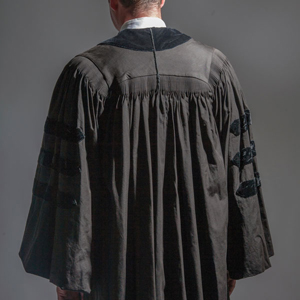Implicit bias is a challenge even for judges

iStock photo
Judges are tasked with being the most impartial members of the legal profession. On Friday afternoon, more than 50 of them discussed how this isn’t so easy to do—and perhaps even impossible when it comes to implicit bias.
But working to overcome biases we don’t recognize is a job that is as necessary as it is worth doing.
“We view our job functions through the lens of our experiences, and all of us are impacted by biases and stereotypes and other cognitive functions that enable us to take shortcuts in what we do,” 6th U.S. Circuit Court of Appeals Judge Bernice B. Donald told a gathering of judges, state and federal, from around the country. Donald was on a panel for a program by the ABA’s Judicial Division, titled “Implicit Bias and De-Biasing Strategies: A Workshop for Judges and Lawyers,” at the association’s annual meeting in San Francisco.
The audience of mostly judges heard several examples from various studies over the years: Darker skin leads to longer prison sentences, differentiating even between lighter- and darker-skinned African-Americans. Prospective jurors given facts about a fictional incident remember more aggressive details about a defendant named “Tyrone” than they do when the same scenario concerns a “William.” And when 60 lawyers were shown the same research memo from what they believed to be a third-year law student, and half were told it was by a black student while the other half were told the writer was white, they gave the black writer a 3.2 out of 5 and scored the white writer 4.1.
And the implicit-association test for measuring such bias shows, after being taken by thousands of individuals, that 80 percent of white test-takers and 40 percent of blacks tested show a pro-white bias, said panelist Johanna Wald, director of strategic planning for the Charles Hamilton Houston Institute for Race and Justice at Harvard Law School.
The test is easy to take and surprisingly accurate. The key is that these typically are unconscious biases.
Wald asked the judges and lawyers to keep three things in mind: Bias is a natural human tendency and useful because we need shortcuts in dealing with so much in life; unconscious biases often are in conflict with our egalitarian values; and yet they predict and determine our actions and decisions more than our explicit values.
There isn’t so much a need for more research in the area, Wald said, but a need to identify which research is important in the application of justice and what to do about it.
“Unless and until we start to get a handle on that and figure out what to do about that … the outcomes are going to be just as harmful as if they were explicit biases,” she said.
Judge Donald told a story from her time as a federal trial judge, when she let the lawyers conduct voir dire. When the prosecutor finished, the defense attorney stepped into the well and asked: “How many of you know what a drug dealer looks like? And hands went up,” she said, noting that the defendant looked like he was from central casting—at least to our biases.
In November, Donald said, the ABA will publish a source book for judges titled De-Biasing Strategies for the Judiciary, a joint effort of the association’s Judicial Division, Criminal Justice Section (of which she is the outgoing chair) and Litigation Section.
Follow along with our full coverage of the 2016 ABA Annual Meeting.



